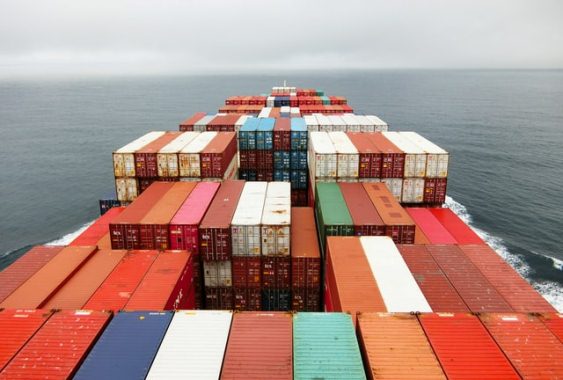
-
The district of Beilun in Ningbo has been locked down following the discovery of a coronavirus case on January 1, 2022
-
Maersk in its latest advisory said three of the five container terminals in Ningbo are located near the epidemic area but no COVID cases have been detected so far
-
Container load and discharge operations in the three nearby terminals are normal
-
Vessel calls and departures have been normal so far
A partial lockdown of Ningbo city in East China’s Zhejiang Province, home to the world’s third largest container port, has led to problems like fewer drivers and trucks, raising concerns about cargo flows.
The authorities announced a lockdown for the district of Beilun in Ningbo following the discovery of a coronavirus case on January 1, 2022, according to a January 3 report from Global Times.
The infected person was an employee of Shenzhou International, a major garment processing company in Ningbo that supplies global sports and leisure brands like Nike and Uniqlo.
From January 1 until January 3, the report said Ningbo reported 23 coronavirus cases. The outbreak was highly concentrated in Shenzhou International’s plant in Beilun.
The lockdown has triggered some worries that China’s coronavirus spreading might affect overseas clothing brands.
The lockdown also has a wider impact, as Beilun is one of the 19 areas of Ningbo-Zhoushan port and is home to some of the city’s busiest container terminals. Last year, the Ningbo-Zhoushan port’s throughput exceeded 30 million standard containers, a record, the report said.
Local officials have taken emergency measures to guarantee the logistics of Beilun after the lockdown, including issuing thousands of passes to qualified truck drivers to help them enter closed areas, as well as allocating designated “greenways” where external container vehicles are allowed to enter the port region, officials said at a coronavirus press conference on January 2.
Container shipping giant Maersk in its latest advisory released January 3 said that of the five container terminals in Ningbo, three terminals—Ningbo Beilun Container Terminal (NBCT), Ningbo Beilun Second Container Terminal (NBSCT), and Ningbo Beilun Third Container Terminal (NBTCT)—are located near the epidemic area of Beilun district but added that no cases have to date been reported at these terminals.
The carrier gave these further updates:
- Container load and discharge operations are normal in NBCT, NBSCT and NBTCT.
- Container gate-in and gate-out operations are permitted only through five dedicated channels, including four high-speed intersections (Beilu, Chaiqiao, Guoju, Chuanshan) and one road between NBCT and NBSCT, from January 1 in the three terminals.
- Ningbo Bluedragon LongXing warehouse operations have been completely suspended until further notice.
- Ningbo Bluedragon LongFei warehouse operations of cargo inbound and outbound remain open only for vessel calls at NBTCT and Ningbo Meishan Island International Container Terminal.
Vessel calls and departures have been normal so far, the update said.
Maersk said trucking service outside the Beilun district of Ningbo is strictly regulated by the epidemic prevention policy and is suspended now.
“Trucking service providers are in the process of application for the traffic permit with approx. 20% of drivers [having] been permitted. Zhejiang Provincial Government, local governments and Ningbo port are in search of regulations to mitigate the impact on logistics transportation. Some areas have issued relevant policies to allow trucks from Beilun area to operate under strict control,” it added.
The Port of Ningbo-Zhoushan is the busiest in the world in terms of cargo tonnage. It is located in Ningbo and Zhoushan on the coast of the East China Sea in Zhejiang province, which lies on the southeast end of Hangzhou Bay, across which it faces the municipality of Shanghai.
Photo by Rinson Chory on Unsplash




